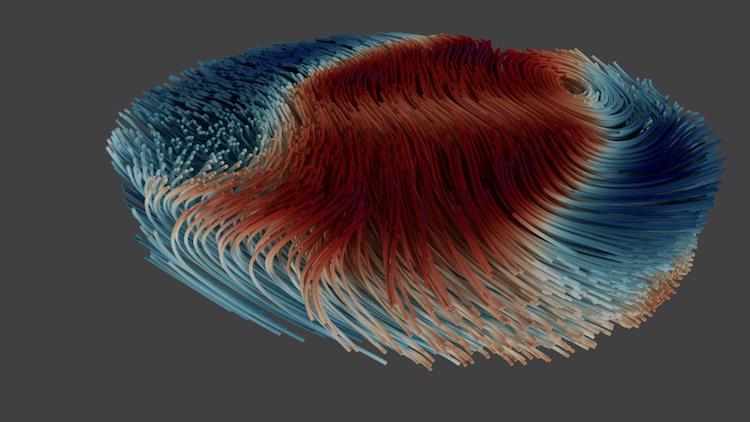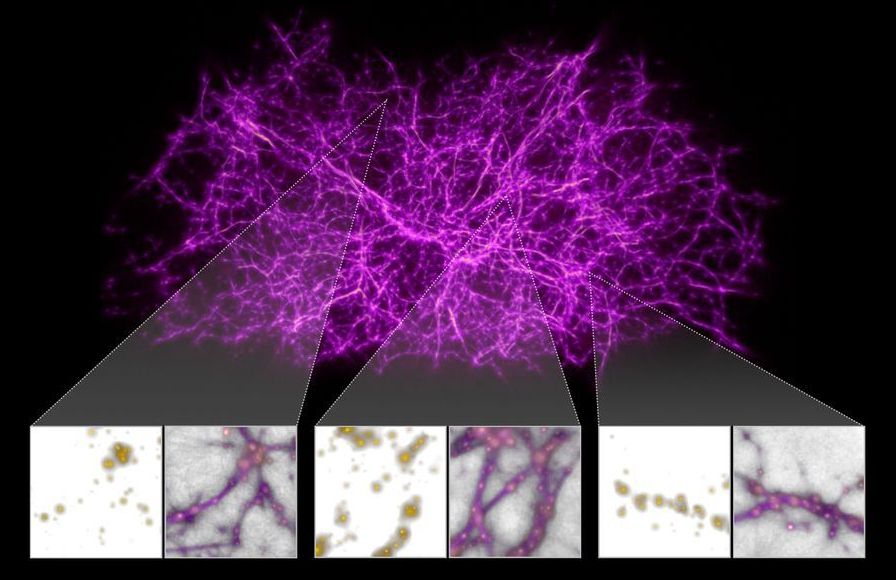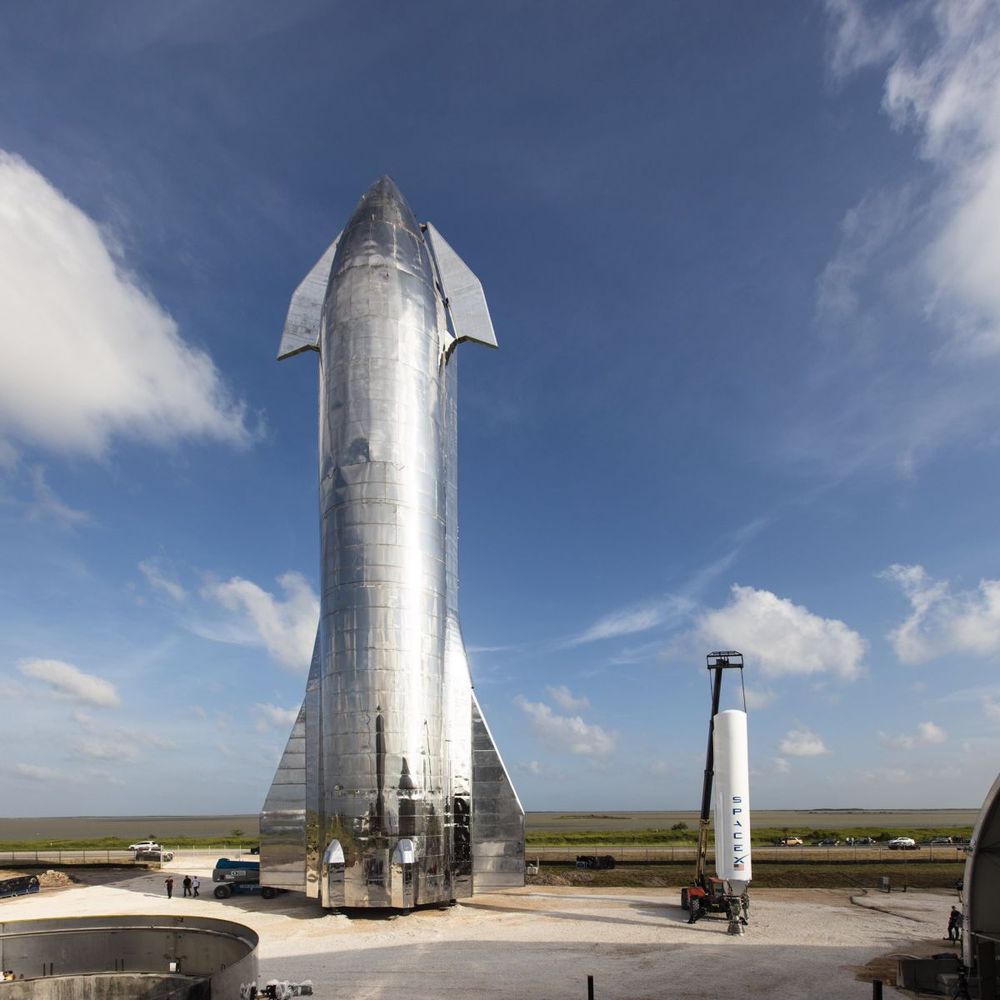New imaging technique can visualize the dynamics of magnetic structures in three dimensions for the first time.
Page 7780
Mar 13, 2020
Slime Mold Simulations Map Dark Matter Holding Universe Together
Posted by Genevieve Klien in categories: biological, cosmology, evolution
The behavior of one of nature’s humblest creatures is helping astronomers probe the largest structures in the universe.
The single-cell organism, known as slime mold (Physarum polycephalum), builds complex filamentary networks in search of food, finding near-optimal pathways to connect different locations. In shaping the universe, gravity builds a vast cobweb structure of filaments tying galaxies and clusters of galaxies together along faint bridges hundreds of millions of light-years long. There is an uncanny resemblance between the two networks: one crafted by biological evolution, and the other by the primordial force of gravity.
The cosmic web is the large-scale backbone of the cosmos, consisting primarily of the mysterious substance known as dark matter and laced with gas, upon which galaxies are built. Dark matter cannot be seen, but it makes up the bulk of the universe’s material. The existence of a web-like structure to the universe was first hinted at in the 1985 Redshift Survey conducted at the Harvard-Smithsonian Center for Astrophysics. Since those studies, the grand scale of this filamentary structure has grown in subsequent sky surveys. The filaments form the boundaries between large voids in the universe.
Mar 12, 2020
Update on COVID-19 outbreak with Professor Neil Ferguson
Posted by Teresa Lien in categories: biotech/medical, economics, genetics, health, policy

First wave 🌊.
Your questions answered — an update (11−03−2020): Professor Neil Ferguson on the current status of the COVID-19 Coronavirus outbreak, case numbers, intervention measures and challenges countries are currently facing.
Continue reading “Update on COVID-19 outbreak with Professor Neil Ferguson” »
Mar 12, 2020
SpaceX CEO Elon Musk explains why we need a ‘whole new architecture’ for space travel
Posted by Roderick Reilly in categories: Elon Musk, space travel
SpaceX CEO Elon Musk says humanity needs a “whole new architecture” to fly in space beyond low Earth orbit.
SpaceX CEO Elon Musk explains why we need a ‘whole new architecture’ for space travel :
Mar 12, 2020
China’s Mars mission likely still on track for July launch despite coronavirus outbreak
Posted by Prem Vijaywargi in categories: biotech/medical, space travel
Despite the lack of official comment on the mission, China’s first expedition to Mars appears to be on track.
Mar 12, 2020
Permanent magnets stronger than those on refrigerator could be a solution for delivering fusion energy
Posted by Quinn Sena in categories: nuclear energy, physics, space
Permanent magnets akin to those used on refrigerators could speed the development of fusion energy—the same energy produced by the sun and stars.
In principle, such magnets can greatly simplify the design and production of twisty fusion facilities called stellarators, according to scientists at the U.S. Department of Energy’s (DOE) Princeton Plasma Physics Laboratory (PPPL) and the Max Planck Institute for Plasma Physics in Greifswald, Germany. PPPL founder Lyman Spitzer Jr. invented the stellarator in the early 1950s.
Most stellarators use a set of complex twisted coils that spiral like stripes on a candy cane to produce magnetic fields that shape and control the plasma that fuels fusion reactions. Refrigerator-like permanent magnets could produce the hard part of these essential fields, the researchers say, allowing simple, non-twisted coils to produce the remaining part in place of the complex coils.
Mar 12, 2020
Nuclear power plants are coming to the battlefield
Posted by Quinn Sena in categories: energy, military
Lasers o.o
They could supply energy to far-flung bases, power laser weapons and charge electric vehicles.
Science and technology Mar 14th 2020 edition.
Continue reading “Nuclear power plants are coming to the battlefield” »
Mar 12, 2020
Scientists discover the mathematical rules underpinning brain growth
Posted by Quinn Sena in categories: bioengineering, biotech/medical, mathematics
Life is rife with patterns. It’s common for living things to create a repeating series of similar features as they grow: think of feathers that vary slightly in length on a bird’s wing or shorter and longer petals on a rose.
It turns out the brain is no different. By employing advanced microscopy and mathematical modeling, Stanford researchers have discovered a pattern that governs the growth of brain cells or neurons. Similar rules could guide the development of other cells within the body, and understanding them could be important for successfully bioengineering artificial tissues and organs.
Their study, published in Nature Physics, builds on the fact that the brain contains many different types of neurons and that it takes several types working in concert to perform any tasks. The researchers wanted to uncover the invisible growth patterns that enable the right kinds of neurons to arrange themselves into the right positions to build a brain.
Mar 12, 2020
Cleveland Clinic develops coronavirus test that gives faster results
Posted by Prem Vijaywargi in categories: biotech/medical, health

The Cleveland Clinic has developed a coronavirus test that will be able to deliver results in just eight hours.
It will be significantly faster than tests available at other US public health laboratories, which take between two to seven days to confirm results.
















